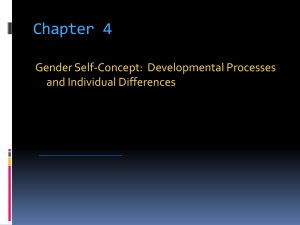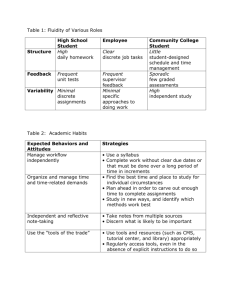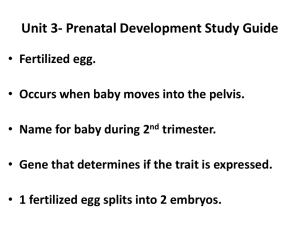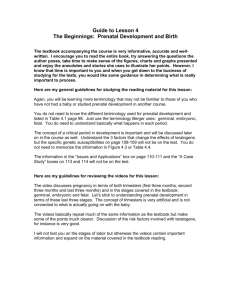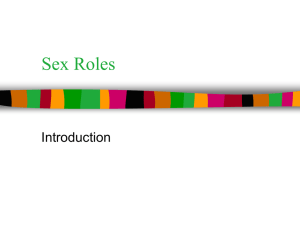Chapter Summary Gender Self-Concept Gender self
advertisement
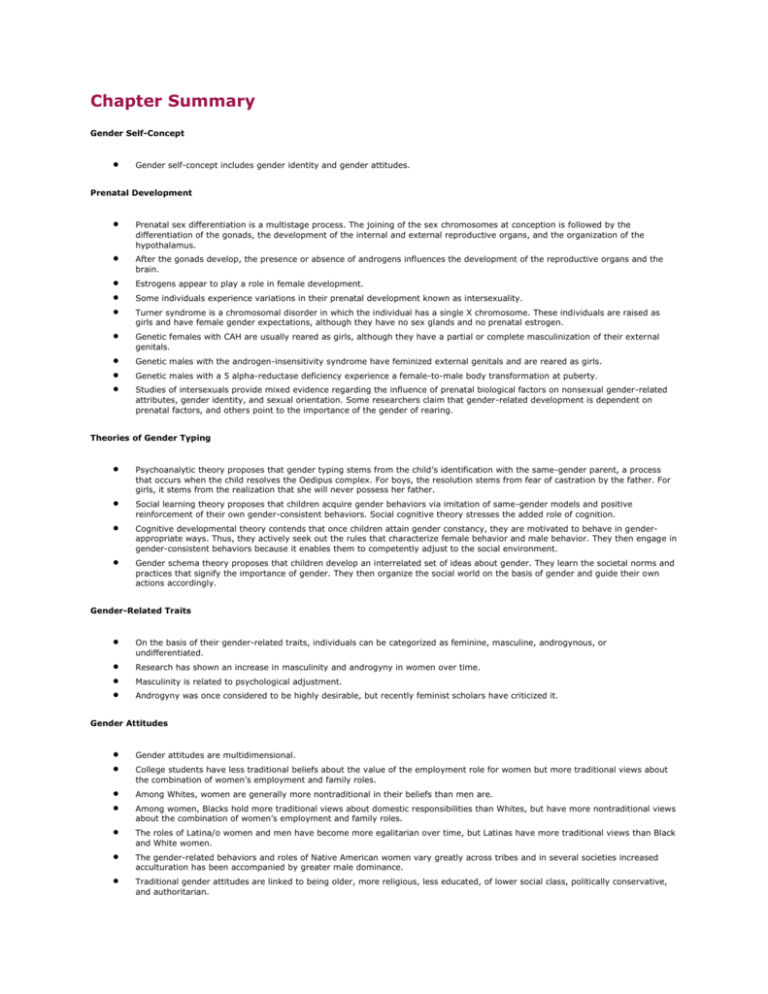
Chapter Summary Gender Self-Concept Gender self-concept includes gender identity and gender attitudes. Prenatal Development Prenatal sex differentiation is a multistage process. The joining of the sex chromosomes at conception is followed by the differentiation of the gonads, the development of the internal and external reproductive organs, and the organization of the hypothalamus. After the gonads develop, the presence or absence of androgens influences the development of the reproductive organs and the brain. Estrogens appear to play a role in female development. Some individuals experience variations in their prenatal development known as intersexuality. Turner syndrome is a chromosomal disorder in which the individual has a single X chromosome. These individuals are raised as girls and have female gender expectations, although they have no sex glands and no prenatal estrogen. Genetic females with CAH are usually reared as girls, although they have a partial or complete masculinization of their external genitals. Genetic males with the androgen-insensitivity syndrome have feminized external genitals and are reared as girls. Genetic males with a 5 alpha-reductase deficiency experience a female-to-male body transformation at puberty. Studies of intersexuals provide mixed evidence regarding the influence of prenatal biological factors on nonsexual gender-related attributes, gender identity, and sexual orientation. Some researchers claim that gender-related development is dependent on prenatal factors, and others point to the importance of the gender of rearing. Theories of Gender Typing Psychoanalytic theory proposes that gender typing stems from the child’s identification with the same-gender parent, a process that occurs when the child resolves the Oedipus complex. For boys, the resolution stems from fear of castration by the father. For girls, it stems from the realization that she will never possess her father. Social learning theory proposes that children acquire gender behaviors via imitation of same-gender models and positive reinforcement of their own gender-consistent behaviors. Social cognitive theory stresses the added role of cognition. Cognitive developmental theory contends that once children attain gender constancy, they are motivated to behave in genderappropriate ways. Thus, they actively seek out the rules that characterize female behavior and male behavior. They then engage in gender-consistent behaviors because it enables them to competently adjust to the social environment. Gender schema theory proposes that children develop an interrelated set of ideas about gender. They learn the societal norms and practices that signify the importance of gender. They then organize the social world on the basis of gender and guide their own actions accordingly. Gender-Related Traits On the basis of their gender-related traits, individuals can be categorized as feminine, masculine, androgynous, or undifferentiated. Research has shown an increase in masculinity and androgyny in women over time. Masculinity is related to psychological adjustment. Androgyny was once considered to be highly desirable, but recently feminist scholars have criticized it. Gender Attitudes Gender attitudes are multidimensional. College students have less traditional beliefs about the value of the employment role for women but more traditional views about the combination of women’s employment and family roles. Among Whites, women are generally more nontraditional in their beliefs than men are. Among women, Blacks hold more traditional views about domestic responsibilities than Whites, but have more nontraditional views about the combination of women’s employment and family roles. The roles of Latina/o women and men have become more egalitarian over time, but Latinas have more traditional views than Black and White women. The gender-related behaviors and roles of Native American women vary greatly across tribes and in several societies increased acculturation has been accompanied by greater male dominance. Traditional gender attitudes are linked to being older, more religious, less educated, of lower social class, politically conservative, and authoritarian. College women and men associate more advantages with being male than with being female. Males, compared to females, are more negatively evaluated for engaging in cross-gender behavior.

